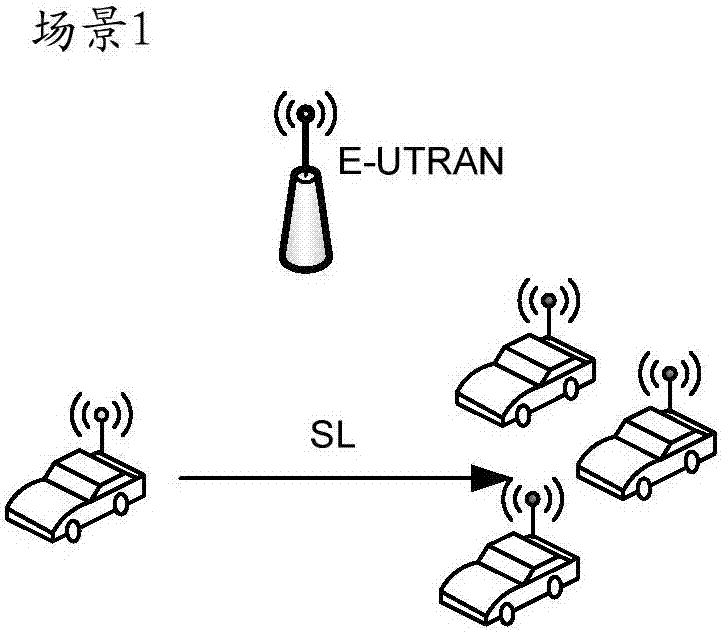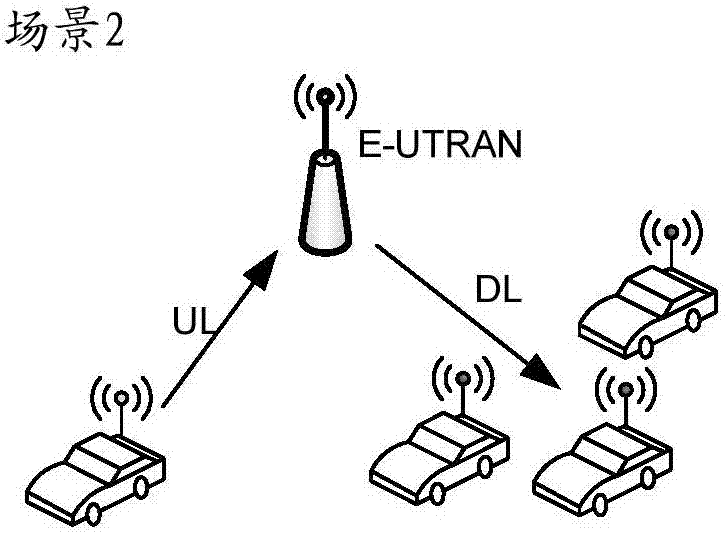Method and device for resource allocation
A resource allocation and wireless resource technology, applied in the field of communication, can solve problems such as messages that cannot be received correctly by other terminals, missed hearing, and exceeding delay requirements, etc.
- Summary
- Abstract
- Description
- Claims
- Application Information
AI Technical Summary
Problems solved by technology
Method used
Image
Examples
Embodiment 2
[0198] Preferred embodiment 2 can be understood as the preferred embodiment of the second example above
[0199] In the preferred embodiment 2 of the present invention, the vehicle device B has a positioning function and can obtain its own location information in real time. Since the V2X message sent by the vehicle device B needs to be correctly received by the surrounding vehicles, and the surrounding vehicles may also need to send For V2X messages, considering the impact of half-duplex and co-channel interference, adjacent vehicles cannot allocate the same resources. However, in order to improve resource utilization, considering that vehicles that are far away do not need to monitor each other and there is no interference, vehicles that are far away can allocate exactly the same resources. Therefore, the base station can allocate appropriate resources after acquiring the geographic location information of the vehicle so as to maximize resource utilization without causing int...
Embodiment 3
[0226] Preferred embodiment 3 can be understood as the preferred embodiment of the above-mentioned example 2
[0227] In a preferred embodiment of the present invention, another method for reducing geographic location reporting overhead is provided, including:
[0228] Step 1: A network control device (such as a base station) sends an area location indication message;
[0229] The area location indication information includes: the central geographic location of each area, direction and angle information, and a list of horizontal and vertical distance information. E.g:
[0230] Region ID
Central location
direction angle information
Lateral distance
1
(x 1 ,y 1 )
A 1
Dh 1
Dv 1
2
(x 2 ,y 2 )
A 2
Dh 2
Dv 2
…
N
(x n ,y n )
A n
Dh n
Dv n
[0231] Further, the network control device sends the area location indication infor...
Embodiment 4
[0237] With reference to the above multiple embodiments, after the terminal determines the geographic location indication information, it may send it through MAC CE and / or physical layer signaling.
[0238] For example, the geographic location indication information includes N bits of information, the first M bits are sent through the MAC CE, and the latter N-M bits are sent through physical layer signaling. Wherein, N is a natural number greater than 0. The value range of M is 0-N.
[0239] Specifically, the terminal sends information of the next N-M bits in the N-bit geographical location indication information through the physical layer uplink control channel PUCCH.
[0240] The information of the first M bits in the N-bit geographical location indication information is sent by the MCE CE. The dedicated logical channel identifier (LCID) corresponding to the MAC CE is sent in the MAC subheader corresponding to the MAC CE.
[0241] Further, at the same moment, the terminal...
PUM
 Login to View More
Login to View More Abstract
Description
Claims
Application Information
 Login to View More
Login to View More - R&D
- Intellectual Property
- Life Sciences
- Materials
- Tech Scout
- Unparalleled Data Quality
- Higher Quality Content
- 60% Fewer Hallucinations
Browse by: Latest US Patents, China's latest patents, Technical Efficacy Thesaurus, Application Domain, Technology Topic, Popular Technical Reports.
© 2025 PatSnap. All rights reserved.Legal|Privacy policy|Modern Slavery Act Transparency Statement|Sitemap|About US| Contact US: help@patsnap.com



